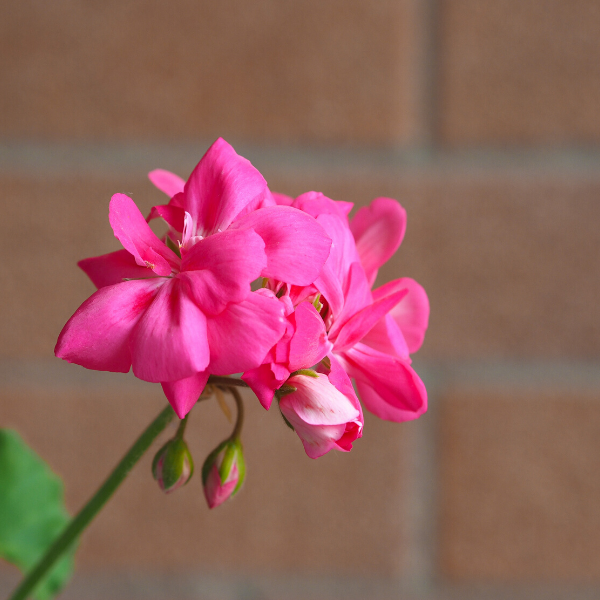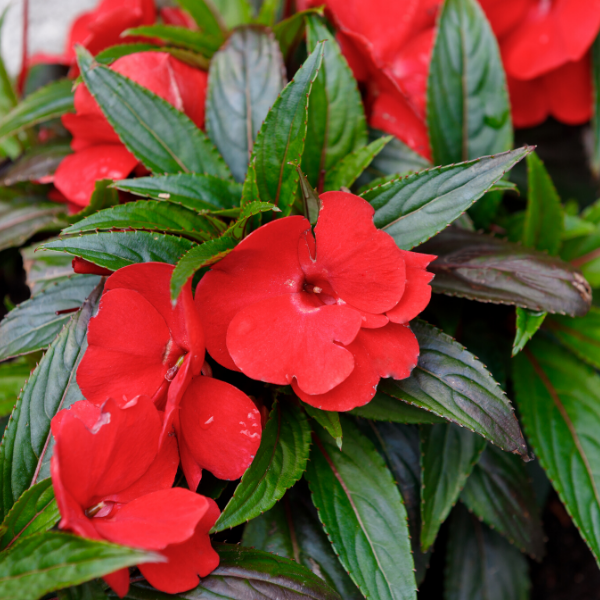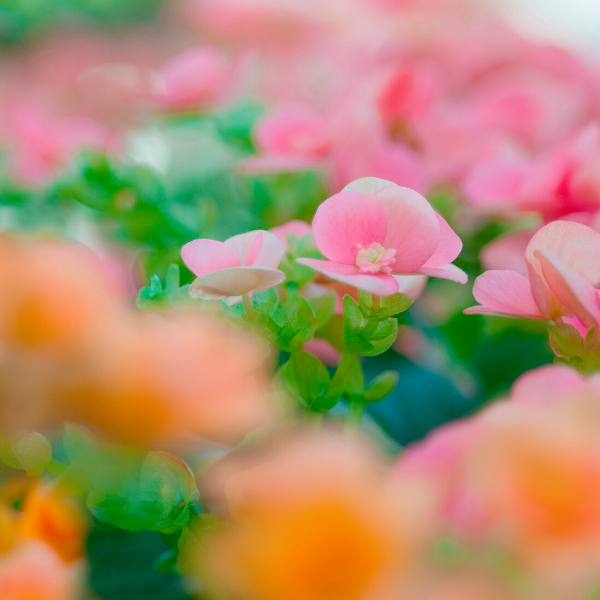You’re accessing archived content
This is archived content from the UIT website. Information may be outdated, and links may no longer function. Please contact stratcomm@it.utah.edu if you have any questions about archived content.
UIT's Judy Yeates on patio gardening in a pandemic

Judy Yeates, executive assistant
UIT's Judy Yeates has been container gardening for decades. Rather than produce — which is seeing a resurgence in the form of "victory gardens" — she plants perennial flowers.
"Geraniums are my friends, but impatiens and begonias do well on my deck, too," said Yeates, executive assistant to Chief Information Officer Steve Hess.
Flowers add color to our communities and lives. In uncertain times, Yeates equates plant care to self-care.
"I like the tranquility of planting and maintaining a garden. Even weeding can be a kind of meditation for me," she said.
Yeates comes by it honestly. Her grandfather, Herbert Vowles, was a sharecropper who also harvested for farms in the Tooele-Grantsville area and off-season, worked for the Kennecott Copper Mine.

Geraniums
(Geraniaceae family)
A "fastidious man," Vowles lined the walls of his shed and garage with pristine tool boards.
"He was that way with planting, too, very organized," Yeates said. "Back then, you ate what you grew, so he used every bit of his property, and borrowed part of a neighbor's yard through an easement to grow tomatoes. Whatever surplus he had, he'd get a return on. He really had it down to a science."
Vowles's son, Lynn Vowles, was a master gardener who also devoted large tracts of property to planting.
"Dad had large yards with a vegetable garden section, sections for flowering shrubs, pretty annual flowering garden spots, and he loved to plant and care for roses," Yeates said. "As much as possible, I've tried to follow in his footsteps. Though I don't grow vegetables, he taught me to love playing in the dirt."

Lessons in property maintenance arose a bit unexpectedly, too.
In the mid-90s, Yeates and her husband, Phillip, rented a condominium in the Avenues when their landlord was called away to active duty in the U.S. Navy. Taking care of the building fell to the man's parents, who eventually passed away.
"When the owner came back to Utah for his mother's funeral, he stopped by our unit and handed my husband the rent ledger and checkbook. 'Will you take care of the property?' [he asked]. We were longtime residents and my husband was capable of certain things like plumbing. So just like that, we became the managers."

Impatiens
(Balsaminaceae family)
Although Yeates calls it a "Ripley's Believe It or Not story" the couple enjoyed tending to the building, yards, and gardens.
"I had plenty of opportunities to plant in the spring, maintain in the summer, and prepare the garden areas for fall, plus other manager duties like mowing grass and raking leaves," Yeates said.
In 2006, they moved to a top floor, north-facing condo in Murray. The smaller space and limited sun exposure inspired Yeates to get creative.
"I've experimented with different kinds of plants that do well in a pot and don't require a whole lot of sun," she said. "I have pots of different sizes — some sit on stands, and some sit on the ground."

L-R: Yeates's father, Lynn Vowles, in his 30s, and at 80, shortly before he passed away.
Yeates tries to emulate a popular container design concept known as "thrill, fill, and spill." The idea is to place an upright plant in the center of the container to "thrill" the eye (draw attention). The planter is then "filled" with an accenting color, while additional plants spill over the sides to soften the appearance and extend the color.
"I love lots of color, so I plant what appeals to me. I mix heights in one pot, and I like vine geraniums because when they mature, they spill over the side of the pot and continue to bloom," she said.
Yeates' top tips for happy container flowers:
- Planters must be large enough to accommodate the root system of the plants. If not,
plants may die within a few weeks.
- It's important that the soil holds water but also drains.
- Containers need drainage holes in the bottom large enough to prevent soil from clogging the hole while still promoting drainage. If the hole is too large, soil will leak through the bottom during watering.

Begonias
(Begoniaceae family)
"I always use pots with good size drain holes and put a few rocks in the bottom so the dirt doesn't block the holes, and I use the clear plastic trays under the pots to keep the water from staining my deck," Yeates said.
The bottom line? Ample space and good drainage mean bigger plants and less watering.
"Just make the best use of what you have," Yeates said.
Node 4
Our monthly newsletter includes news from UIT and other campus/ University of Utah Health IT organizations, features about UIT employees, IT governance news, and various announcements and updates.
